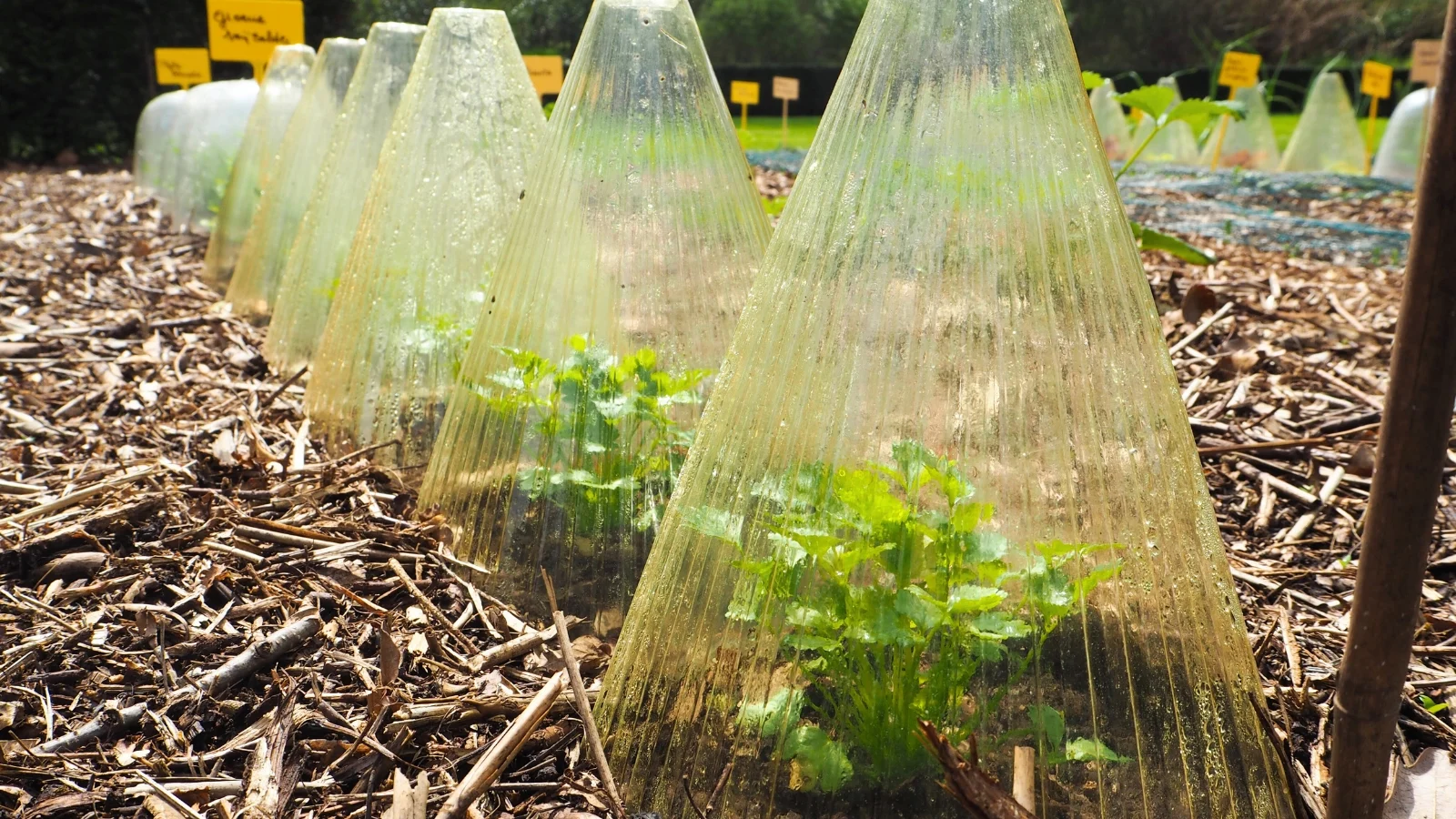Summer brings tons of life to the garden, and it also brings hurricane season, which can be difficult to contend with. Florida gardener Melissa Strauss shares some tips on prepping your garden to withstand damage from a severe storm.
Hurricanes are absolutely terrifying, and where I live, they’re pretty much unavoidable. Growing up in Florida, I’ve dealt with my fair share of severe weather alerts and wind gusts strong enough to send even the heaviest lawn furniture flying. While the biggest priority during a hurricane this powerful is keeping yourself safe and protecting your home, gardeners also have to worry about their plants.
Hurricane season officially starts on June 1st and runs through November 30th—that’s a huge chunk of the year, covering most of the growing season. These massive storms bring torrential rain and, more importantly, destructive winds. If you’re near the coast, storm surge is another serious threat.
If heavy rain soaks the ground before the worst winds hit, the damage can be even worse. Wet soil loosens roots, making them easier to uproot.
Of course, the strongest winds can wreak havoc, flattening delicate plants or even knocking over trees—that’s the biggest danger. And if storm surges are common in your area, it’s best to avoid plants that can’t handle salt.
If you garden in hurricane-prone regions, there’s only so much you can do to prevent damage. But in the days leading up to a storm, there are steps you can take to help protect your garden and landscape.
Take Down Hanging Baskets & Bring in Pots
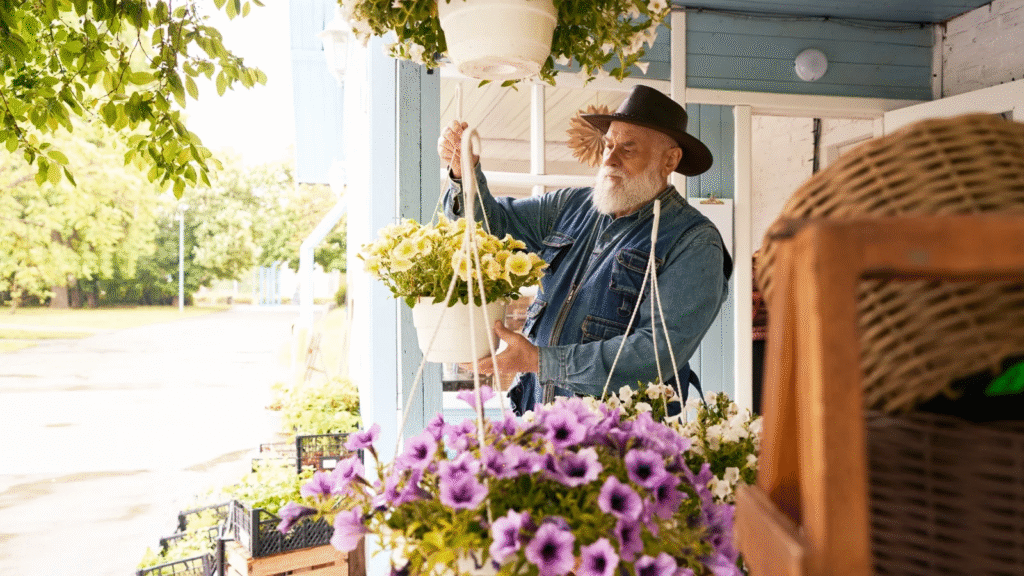
Even a weaker storm can send unsecured planters flying.
Potted and hanging plants are some of the most vulnerable to high winds, so they should be your first priority. Hanging baskets are especially risky—they can get ripped away and smash into things. What you do with them depends on how strong the hurricane is.
For tropical storms or Category 1 hurricanes, I don’t stress too much about containers—I focus more on supporting plants in the ground. I do take down hanging baskets and move pots to a sheltered spot, like under a deck or in a low area.
For stronger hurricanes, I bring all my potted and hanging plants inside—either into the garage or the house. Winds can turn them into dangerous projectiles, smashing windows or damaging structures. When in doubt, I over-prepare. Better safe than sorry!
Cover Delicate Plants
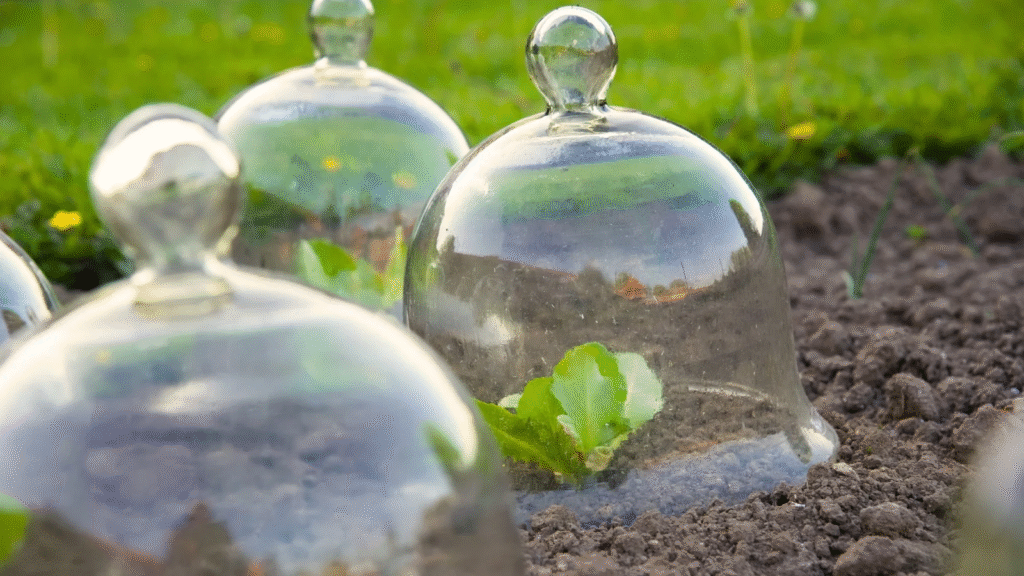
Cloches aren’t just adorable—they help keep fragile greens from breaking.
For tender garden plants, sometimes the best you can do is cover them and hope they survive. Unfortunately, this includes a lot of tropical plants, which is tough since hurricanes often hit tropical areas hardest. Tall, flowering plants and other herbaceous ones with long stems are also at risk.
Use whatever you have on hand—large nursery pots, plastic storage bins, or even upside-down trash cans for bigger plants. Cloches work well for smaller ones.
But just placing covers over plants can create more hazards if they blow away. Weigh them down with something heavy—bricks for small covers, cinderblocks or pavers for larger ones. The taller the cover, the more weight you’ll need.
Mulch
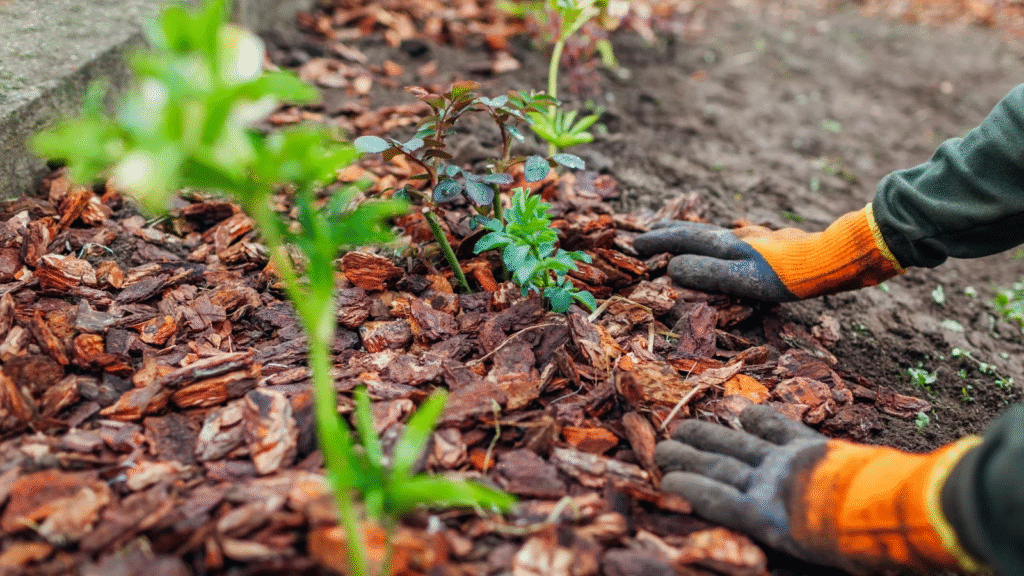
Bark mulch helps hold soil in place around the base of plants.
Hurricanes don’t just uproot plants—they also erode soil. Heavy rain and wind can wash away dirt, exposing fragile roots.
Soft mulch (like pine needles or bark) is better than hard materials (like river rock or crushed granite), which can become dangerous projectiles.
Mulch helps anchor the soil during storms (even during storm surges), protects roots, and keeps moisture in the ground so plants stay strong before, during, and after the hurricane.
Trim Damaged Limbs & Branches
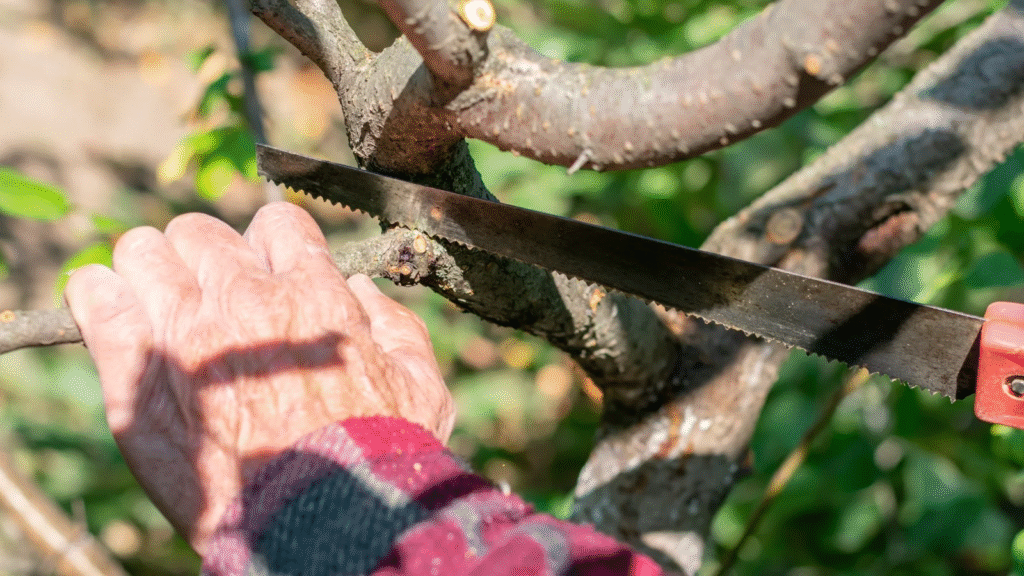
Trimming weak branches early helps keep the rest of the yard safer.
This is especially important if you live in a hurricane-prone area with lots of big trees and shrubs. Coastal areas might have fewer trees, but hurricanes can cause damage far inland, too.
Grab some loppers (and a ladder if needed) and check trees for weak or dead branches. Cut off anything that looks risky—these are the parts that cause the worst damage in a storm.
Even better, prune your trees before hurricane season starts. If you have tall trees with branches you can’t reach, call an arborist to remove anything that might fall on your house.
Harvest What You Can
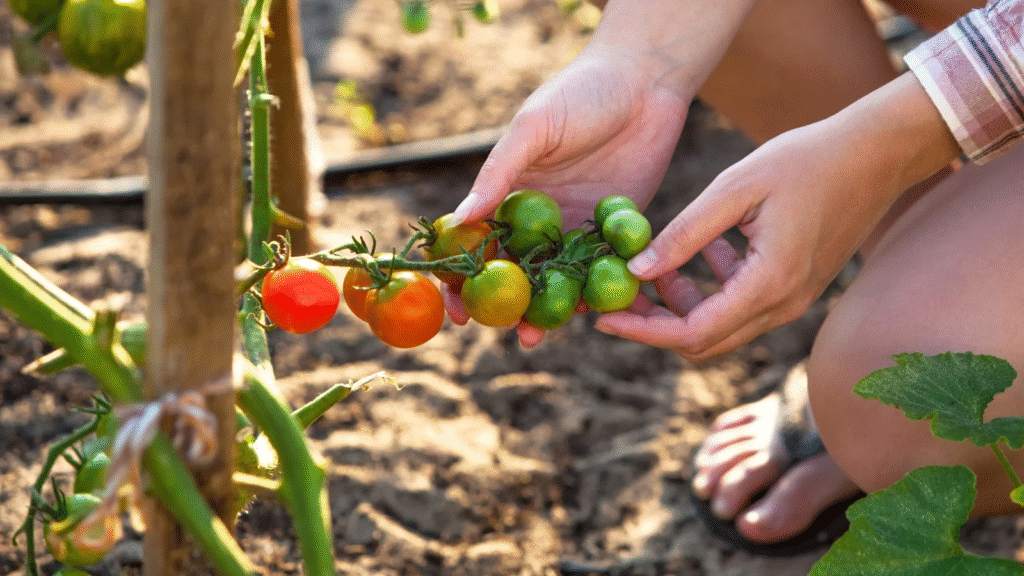
Tomatoes will ripen off the vine—grab them early!
You’ve put so much time, money, and effort into your vegetable garden and fruit trees—don’t let a hurricane destroy everything. I know harvesting isn’t the first thing on your mind before a storm, but if you have time, pick what you can.
Many fruits and veggies keep ripening after they’re picked (these are called climacteric). You can harvest them early and let them finish ripening inside. Examples include:
- Tomatoes
- Potatoes
- Hot peppers
- Apples
- Peaches
- Pears
- Plums
These produce ethylene, a hormone that speeds up ripening.
Non-climacteric fruits and veggies (like most berries, citrus, cucumbers, cherries, eggplants, squash, melons, and sweet peppers) won’t ripen after picking. If they’re ready, bring them in; if not, cover them with burlap or lightweight cloth.
If you have a cutting garden, harvest as much as possible—many flowers won’t survive a hurricane. Even if buds are still tight, take a chance and cut them.
Stake Tall Plants
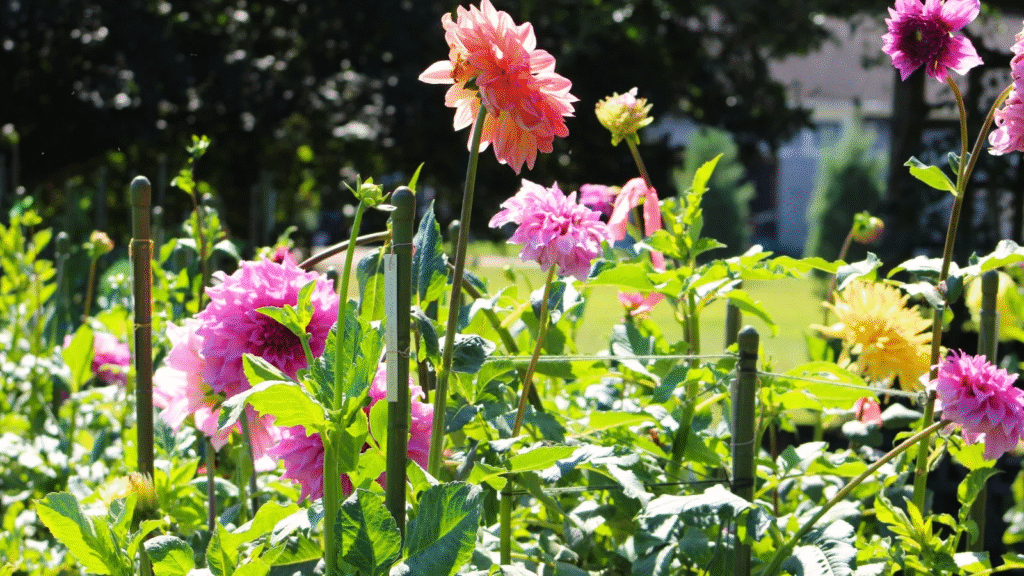
Stakes and cages help keep heavy blooms from snapping.
Last year, I grew some huge dahlias—the bigger the flower, the taller the plant. Those heavy blooms can topple stems even on calm days, so they’re no match for hurricane winds. I forgot to stake mine, and most snapped in half.
Tall, delicate plants need support before a storm—even a weaker hurricane can destroy them. Tomato cages work well, or use bamboo stakes (just make sure they’re deep enough in the ground).
Pay extra attention to shallow-rooted shrubs like azaleas, hydrangeas, junipers, hollies, and yews—they can blow over easily.
Secure Large Objects

Garden structures can become dangerous in high winds—anchor them before they fly away.
Finally, don’t forget about non-plant items in your yard. Lawn chairs can turn into missiles, and a patio umbrella can launch like a spear if the wind catches it right.
If you have arbors or arches that aren’t firmly anchored, lay them flat. The plants growing on them might get messy, but they’ll likely survive—whereas the structure itself could end up in your neighbor’s pool.
If possible, move outdoor furniture inside or into a shed. If you can’t, stack chairs and secure them with bungee cords to something sturdy (like a deck post).
One myth to ignore: Don’t put patio furniture in your pool to weigh it down. You could damage the pool’s lining or plumbing, and there’s no guarantee the water will keep everything in place.

